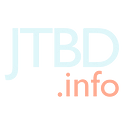Job Stories — Best Friend of Sales
How Job Stories simplify and improve communication across your organization

Jobs to be Done (JTBD) strengthens your business by tightly aligning product strategy with Sales. The focus on motivations and outcomes makes for an easy translation to the language necessary for sales conversations. Let’s look at this in more detail using an example from an earlier JTBD post by Alan Klement.
So what? Who cares? These two bedrock questions apply whether you sell a product or an idea. They guide the translation from what a product does to what value it provides and why someone should buy it. As we’ll see, they also align beautifully with the focus of a job story. To demonstrate how well this works, we’ll use the same story Alan Klement breaks down (from Ross Belmont) for the Amazon Fire and its mayday help feature in “Five Tips For Writing A Job Story:”
When I’m using my tablet and encounter a problem I want to get help right way so I can finish what I started.
Who cares?
Anyone who uses the tablet. The story defines this in way not constrained by a personna categorization. Some may object that this creates too broad a description. Wouldn’t a label on the person serve better as a shorthand for the user in need? I argue that the general description works better. First, it keeps the seller looking for people who match the action, not the demographic. Two, in a B2B setting, the internal title and workflows change from client to client. You don’t want to break the conversational flow by clarifying whether ACME uses a copywriter, a marketing manager, a vertical market specialist, or some other title to create blog content. You must confirm that someone in the organization does the action/situation, not the person’s title.
So what?
The outcome clearly defines the benefit: “… so I can finish what I started.” Here lies another strength of the job story versus the user story. Many user stories end with the application state, not the user benefit. For example, this story might end with, “… returning the tablet to a useable state” or “ … providing an answer to the user’s questions.” That describes what the application does, but not the benefit to the user. The sales team works best with a focus on the benefit, not the behavior.
Narrative driven by emotion
Story based selling, just like storytelling, needs an emotional hook. The “motivation” section lives up to its name in a job story: “… I want to get help right away …”. That explains the motivation for the person to use the solution. One great thing about Alan’s post is the way he fleshes this out with forces that add emotion to the narrative: irritated, nervous, shy. These provide language a salesperson can leverage in a client conversation. These will resonate with the listener, moving from a feature/solution conversation to a more imperative emotion/solution conversation.
Sales increasingly buzzes about the shift to consultative, conversational, storytelling techniques. Job stories support this move by using that language and narrative structure, ready made for sales to use. This benefits your business in many ways. First, it eliminates the need to translate the work of the product manager to market ready language. Second, the validation of the stories by sales, account management and marketing gets easier because everyone speaks the same language. Finally, the feedback from the client facing teams uses the same vernacular as the product strategy teams. Job stories help tear down the tower of babel, providing a singular language for all parties involved in product conception, delivery and market feedback.

